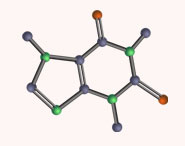


 علم الكيمياء
علم الكيمياء 
 الكيمياء التحليلية
الكيمياء التحليلية 
 الكيمياء الحياتية
الكيمياء الحياتية 
 الكيمياء العضوية
الكيمياء العضوية 
 الكيمياء الفيزيائية
الكيمياء الفيزيائية
 الكيمياء اللاعضوية
الكيمياء اللاعضوية 
 مواضيع اخرى في الكيمياء
مواضيع اخرى في الكيمياء
 الكيمياء الصناعية
الكيمياء الصناعية |
أقرأ أيضاً
التاريخ: 2024-04-22
التاريخ: 2025-04-16
التاريخ: 2025-04-16
التاريخ: 6-9-2019
|
The amount of H3O+ in any solution in water is described using the pH scale. pH is simply a measure of the concentration of H3O+ on a logarithmic scale, and it is characteristic of any aqueous acid—it depends not only on what the acid is (hydrochloric, acetic, etc.) but also on how concentrated the acid is.
●pH is the negative logarithm of the H3O+ concentration. pH = –log[H3O+]
You will already know that neutrality is pH 7 and that below pH 7 water is increasingly acidic while above pH 7 it is increasingly basic. At higher pH, there is little H3O+ in the solution and more hydroxide ion, but at lower pH there is more H3O+ and little hydroxide.
The reason that higher pH means less H3O+ is because the arbitrary defi nition of pH is the negative logarithm (to the base 10) of the H3O+ concentration. To summarize in a diagram:
pH is used to measure the acidity of aqueous solutions, but what about the inherent ten dency of an acidic compound to give up H+ to water and form these acid solutions? A good way of measuring this tendency is to find the pH at which a solution contains exactly the same amount of the protonated, acidic form and its deprotonated, basic form. This number, which is characteristic of any acid, is known as the pKa. In the example just above, this would be the pH where the amount of the carboxylic acid is matched by the amount of its carboxylate salt—which happens to be at about pH 5: the pKa of acetic acid is 4.76. We’ll come back to a more formal definition of pKa later, but first we need to look more closely at this pair of species—the protonated acid and its deprotonated, basic partner.



|
|
|
|
لشعر لامع وكثيف وصحي.. وصفة تكشف "سرا آسيويا" قديما
|
|
|
|
|
|
|
كيفية الحفاظ على فرامل السيارة لضمان الأمان المثالي
|
|
|
|
|
|
|
شعبة مدارس الكفيل: مخيَّم بنات العقيدة يعزِّز القيم الدينية وينمِّي مهارات اتخاذ القرار لدى المتطوِّعات
|
|
|